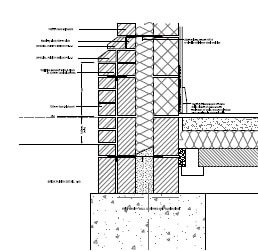The ‘U Value’ of a property lays out the thermal performance of building materials. It shows how hard and how well your insulation is working.
When it comes to energy efficiency, the “buzz words” and technical jargon are endless. And when it isn’t your area of expertise, it can sometimes feel easier to turn a blind eye to them entirely.
We hear you. And that’s why our blog exists.
We’re endeavouring to debunk the confusion that lies around sustainability and building compliance. Our mission is to show that – actually – it’s pretty simple to improve your energy use, save money and, ultimately, do your part for the planet.
Starting with U Value – your thermal performance rating.
Your U Value measures how well the materials are working in your property or development. It’s a fairly broad term, looking at levels of heat loss and thermal resistances.
Layer by layer, it looks at materials, thickness and conductivity within the different aspects of a property.
The end result? A rating determining how efficient heat containment is in your build.
Why does your U Value matter?
It’s one cog in a major machine. Although carbon usage is a major contributor to your development’s environmental performance, thermal insulation is also incredibly important.
By making sure you’re ticking all the boxes, you can find yourself with a home or property for sale that is of the highest energy efficiency and worth more money while costing less to run.
Glass and glazing is a worthwhile and easy way to improve your U Value.
If you’re looking at architectural glazing specifications, you’ll need to consider some different elements of U Values.
- Ug Value – this indicates the thermal performance of the glass panel
- Uf Value – this indicates the thermal performance of the framework
- PSIG – this indicates the thermal performance of the glazing spacer
In turn these – alongside the size of the opening, opening configurations and framing design – will give you your overall U Value rating.
So, as you can see, it really is about the sum of your parts. The more effectively each of these parts work, the more power – and sustainable – your final result.
There are key ways to boost your U Value rating for glazing and windows.
To start off with, you should always ensure all glazing units are fitted with double glazing as an absolute minimum. They should also have a low e coating and argon gas filling: the low e coating works to bounce radiant heat energy from the inside back in, with argon bas adding a heavier load to the air, reducing the speed of convection and heat escape.
You should also consider the specification of glazing and coatings – unsurprisingly, those with a higher spec will have more impact.
True glazing bars and thermally broken fixtures and framing will also affect your U Value; in a nutshell, perfecting each individual factor will give you the very best end product.
It really is as simple as that.





















